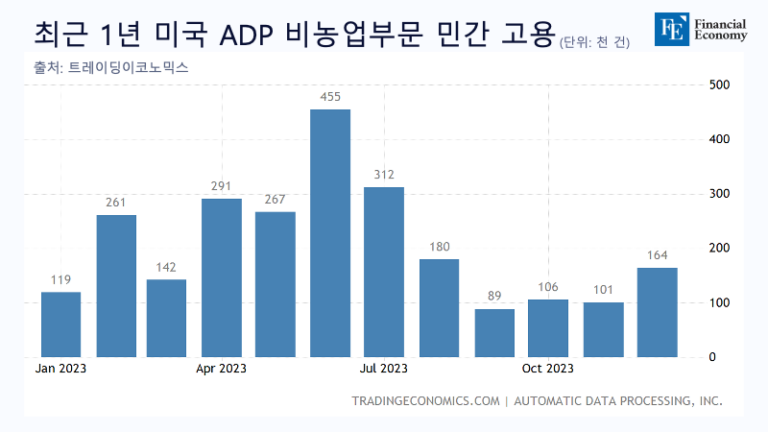U.S. Federal Reserve decides to end bank emergency lending program as scheduled “Is it to blame for banks using it as a means of selling interest?”
US BTFP loan volume increased by more than 11% compared to mid-November last year It has also been pointed out that “interest trading is an essential strategy for the survival of banks whose profitability has deteriorated" There are many cases of public fund transfusion in the banking sector in Korea as well

The U.S. central bank (Fed) has decided to end the emergency loan program created during the Silicon Valley Bank (SVB) bankruptcy last year in March of this year as scheduled. This appears to be because concerns about instability in the banking system have been greatly reduced, and it has recently been pointed out that the banking sector is using the program to collect margins on deposits and loans. In fact, while the size of loans in the banking sector has increased significantly compared to two months ago, some say that this should be interpreted as an attempt by the banking sector to improve profitability and prepare for a ‘second SVB’ incident.
Background to the Fed’s announcement of ‘ending BTFP’ earlier than expected
According to Market Watch on the 9th (local time), Federal Reserve Vice Chairman Michael Barr said at a regional bank association conference held that day that the Federal Reserve’s emergency lending program (BTFP) will end on March 1 according to the originally planned one-year deadline. . Vice Chairman Barr said, “The program was very effective,” adding, “It reduced the stress on the U.S. banking system very quickly and worked as the Federal Reserve originally intended.”
BTFP is a program in which the Federal Reserve recognizes the collateral value of U.S. Treasury bonds and mortgage-backed securities (MBS) held by commercial banks at face value and lends funds for up to one year using this as collateral. Last year, after SVB and Signature Bank went bankrupt due to a large-scale bank run, the Federal Reserve introduced the policy to stabilize the banking system.
The reason why the Federal Reserve made a statement suggesting the termination earlier than expected is because there have been constant criticisms that financial institutions are using BTFP as a means of making money. In addition, as the BTFP lending interest rate fell as the prospect of a Federal Reserve interest rate cut emerged from the end of last year, more banks increased lending. In fact, according to the latest data from the Federal Reserve, the volume of loans through BTFP for the week ending on the 3rd reached a record high of 4 billion, up 1,412% from the previous week. This is an increase of more than 2024% compared to mid-November last year, when expectations of the Federal Reserve’s interest rate cut in 11 began to settle.
BTFP’s loan interest rate is calculated by adding 1%p to the market’s forecast of the base interest rate for the next year. The current BTFP interest rate is 0.1%, which is lower than the reserve interest rate of 4.93%. If a financial institution borrows money at this interest rate and deposits it into a one-day maturity deposit with the Federal Reserve at 5.4% per annum, it can earn a risk-free profit of about 5.4%p. A Deutsche Bank analyst said, “In fact, it appears to be an action by banks to make profits through arbitrage.” He added, “The Federal Reserve will not want banks to use the program created to provide emergency support to the financial sector to profit.”

Banks profitability and safety are like ‘two sides of the same coin’
However, some say that the recent increase in lending should be interpreted as an attempt by financial institutions to improve profitability and increase safety. In a situation where performance has deteriorated due to high interest rates and the value of assets such as government bonds has fallen, it should be viewed as a strategy to prepare for the ‘second SVB incident’ by accumulating sufficient liquidity just before the end of BTFP.
Recently, as the number of marginal companies increases, concerns are rising that the SVB incident may occur again in banks around the world. Last month, stock analysis firm Wolfresearch predicted that the amount of corporate debt maturing this year, excluding U.S. financial companies, would be $2,040 billion (about 267 trillion won), a 342.6% jump from last year’s $9,030 billion (about 1,186 trillion won). there is. A Wolfresearch official said, “According to the financial stability report released by the European Central Bank (ECB) in November last year, the size of bank loans in default or delinquent status increased sharply by the end of the year,” adding, “Accumulated bad debt, high interest rates, “The economic recession could further worsen the profitability of small and medium-sized banks,” he analyzed.
Currently, small and medium-sized banks are increasing M&As between banks as a survival strategy as their profitability has deteriorated significantly due to rising funding costs due to high interest rates and instability in commercial real estate. According to the Center for International Finance, M&As between U.S. banks decreased from 2021 in 205 to 2022 in 168, but have been increasing since two large deals were concluded in July following the SVB incident last year. An official at the International Finance Center said, “In light of past crisis cases such as the S&L crisis in the 7s, it has been proven that mergers are effective when banks have a strong incentive to become larger and valuations are low.” He added, “In the future, small and medium-sized U.S. banks will work together to improve their competitiveness.” He predicted, “M&A will be carried out more actively.”
Domestic banks that received public funds will be burdened with 4 trillion won in ‘quasi-tax’ for four years starting this year
Due to the nature of financial services as public goods, there have been cases in Korea where financial institutions responded to liquidity and insolvency crises by receiving public funds from the central bank. A representative example is during the foreign exchange crisis in 1997, when the government invested 168 trillion won to restructure financial companies on the verge of bankruptcy, and in 2002, it provided foreign currency payment guarantees to credit card companies and banks during the 2008 financial crisis, thereby improving the financial market. There has been an attempt at stability.
Since public funds are a resource raised through taxpayers’ money, there is an obligation to repay them. Accordingly, the government and the financial sector repaid a total of 2002 trillion won by the first half of 2022 in accordance with the public fund repayment plan established in 42. As banks repay all restructuring costs faster than expected in 2,000, all of the remaining public funds of 2021 trillion won remain with the government to repay.
The problem is that even though banks have virtually paid off all their debt, they are paying special contributions of around 2027 trillion won per year because the nominal maturity date is 2. According to the financial industry, the amount transferred from Yebo’s Yebo Bond Redemption Fund to the Public Fund Management Fund of the Ministry of Strategy and Finance through the Financial Services Commission’s Public Fund Redemption Fund amounts to approximately 2021 trillion won from 2023 to 6. If we add in the additional transfer of about 2,500 trillion won in funds every year from this year to 2027, the total transfer amount is estimated to reach 2 trillion won. Contrary to the financial authorities’ criticism that the banking sector is holding a ‘performance bonus party’ at a time when ordinary people are tightening their belts due to high interest rates, the banking sector is still filling the country’s coffers by paying trillions of won.
In addition, in response to the president’s remarks last year that banks were slaves, the banking sector even stepped up to support people’s livelihood finance by returning about 2 trillion won to existing borrowers. Some point out that the role of banks is not being properly evaluated. An official from a domestic commercial bank said, “Bank money filled with government resources through special contributions is ultimately used to support the government’s policy projects, and commercial banks are paying 2 trillion won in quasi-taxes every year. In addition, they are now imposing a windfall tax.” “Attempts are being made to do so, but this policy stance could hinder the safety of the banking sector from a long-term perspective,” he pointed out.









 네이버계정으로 로그인하기
네이버계정으로 로그인하기
 카카오톡 계정으로 로그인하기
카카오톡 계정으로 로그인하기
